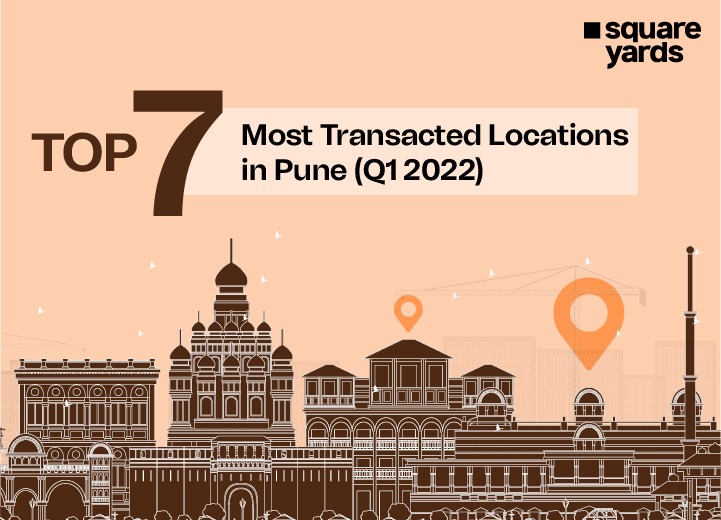Latest News:
- The higher risk-taking ability of the NBFCs (Non-Banking Financial Companies) has made them vast, complex, and interconnected systematically, posing a threat to the financial stability of the banking sector of India.
- RBI’s latest report on financial stability states that it has warned that any failure of the largest HFCs (Housing Finance Companies) or NBFCs can cause incomparable losses and major bank collapses.
- Recently, RBI has cancelled the registration of 1,851 shadow banks due to their incapability to raise Rs. 20 million, which is the bare minimum for regulatory requirements.
During the global financial crisis in 2007, out of all the major causes, the shadow banking system topped the list. That was when the banks worldwide started regulating such shadow banks to ensure financial stability.
But, what is shadow banking, and how do they operate?
‘Shadow Bank’ term was first coined by Paul McCulley in 2007 for U.S. non-banking sectors. But was later formalised definition was given by FSB (Financial Stability Board) as ‘Credit intermediation involving entities (shadow banks) and activities (fully or partially) outside the regular banking system.’
At the same time, the process they use is known as shadow banking.
Shadow entities are categorised under:
|
But one question still stands! Even after supporting India’s banking sector, why is the growth of shadow banks troubling financial stability? To answer this question, let’s learn more about shadow banking.
Table of contents
Why the Growth of Shadow Banks is a Threat?
Shadow banking is different from a standard banking system regarding financial intermediation, structures, and operations. Further, compared to standard banking approaches, shadow banking offers less transparency. You can also compare it with an iceberg, the tip is visible, but you are not aware of how vast it is beneath the water. Therefore, we can conclude that there is a constant threat to financial stability with shadow banking onboard.
Here are some examples explaining the statement mentioned above:
- Financial institutions can earn or produce their own money because of their status and value in the market. However, shadow banks are unable to perform such operations.
- Shadow banks are not regulated like banks and other financial institutions by the RBI. Therefore, they offer less transparency to the general public.
- They raise their funds using market-based products like convertible notes, commercial paper, and other structured financial instruments.
- Further, shadow banks do not offer guaranteed liabilities. Whereas commercial bank deposits offer a guaranteed limited degree by the Indian government.
- Standard banks provide immediate access to bank liquidity. However, shadow banks have no recourse in troubled times.
These non-banking financial entities or shadow banks are not subjected to any regulation, but significant risks are created when they undertake bank-like functions. These risks have the power to destabilise the entire financial system. In fact, during the 2007 financial crisis, it was clear how shadow banking impacted the global financial system, which further formed a complex chain of transactions. Therefore, the growth of shadow banks has become a threat to the Indian economy in several aspects.
see also@ RBI’s New Guidelines: Augmenting Card Issuance Efficacy and Cybersecurity
Risks Involved with Shadow Banks
No doubt that shadow banks play a complementary role in the financial sector, but on the other hand, they also create risks. These risks disturb the organised dimension with their complexity, cross-jurisdictional nature, and inter-connection with the banking system. The risk generated from shadow banking is mainly four types:
- Liquidity risk
- Leverage risk
- Regulatory arbitrage
- Contagion risk
Risk on Liquidity: The incapability of making payment obligations promptly due to incurring losses is considered liquidity risk. It is one of the most common risks the general public faces from shadow banks. It provides funding for long term investments with short term liabilities. Here, the problem is serious when the mismatch risk leads to liquidity.
During the 2008 crisis, some non-banking financial corporations ran into serious liquidity problems. They depended on short-term liabilities like commercial paper and non-convertible debentures to fund their long-term lending or investment.
Risk of Leverage: Shadow banks offer unlimited borrowing amounts and soon become highly leveraged over time. This high leverage aggravates the stress on the financial sector in India’s banking system. And that is how the economy gets impacted, eventually affecting the financial stability.
Regulatory Arbitrage: Credit intermediation is a standard banking activity. However, there are some regulations applicable to all banks regarding credit intermediation. These regulations can be avoided by transferring the components to shadow banks. It is because such banks have fewer regulations. This benefit of banks became a disadvantage for shadow banks and led to the transfer of risk and the creation of a global financial crisis.
Contagion Risk: The risk that spreads financial difficulties at one or more than one bank is known as Contagion Risk. Shadow banks have close links with the definitive banking sector in terms of assets, liabilities, and other segments of the financial system. These factors lead to the contagion risk of losing conviction and uncertainty.
Why is RBI Flagging the Shadow Banks?
The failure of Infrastructure Leasing & Financial Services Limited (IL&FS) and Dewan Housing Finance Corporation Ltd (DHFL) has become the reasons behind the strict guidelines and regulations by RBI for shadow banks.
The reason behind their deterioration is the liquidity crisis which has intensified India’s shadow banking sector.
| Infrastructure Leasing & Financial Services Limited (IL&FS):
IL&FS has total debt of over Rs.99,000 crore as of October 2018. Total Rs.61,000 crore is the targeted debt resolution representing 62% of liabilities. Dewan Housing Finance Corporation Ltd (DHFL):The total debt liability of DHFL as of June 2019 is Rs 850 billion. Out of Rs. 850 million, there are secured loans of Rs. 749 million while the outstanding amount is not secure. Therefore, the company possesses a total loss of Rs. 22 billion in the Q4 of the financial year 2018-2019. |
RBI’s Approach to Regulate Shadow Banks
The Reserve Bank of India identifies any non-banking financial firm by validating their annual report and checking balance sheets. It also observes the deteriorating quality of the assets. However, it is anticipated that some of these firms may continue to risk economic stability due to their increased risk scale.
| In December 2021, NBFCs balance sheet grew in 2021-2022 while the quality of assets declined. |
According to the RBI, all the shadow banks have to follow specific regulations.
Good Quality Credit Portfolios: A credit portfolio is simply an investment portfolio with data related to debts. Banks and other financial institutions commonly hold this data. The shadow banks and cooperative banks must maintain a good quality credit portfolio to represent it to RBI.
Maintain Balance Sheet: Maintaining a balance sheet is now a mandatory action for all the shadow banks. RBI wants these entities to enter every detail of companies’ liabilities and assets at a specific time. A well-maintained balance sheet will make it easy for RBI to target non-performing NBFCs before they take more leverage on themselves.
Maintain Asset Liability: Managing the cash flow and assets to reduce the risk of loss by maintaining asset-liability.
After these RBI regulations, HDFC Ltd. merged with HDFC bank due to narrowing arbitrage opportunities and strict rules. Further, several other significant NBFCs have also failed in recent years. In any case, RBI has the authority to remove any director or group of directors of shadow banks in the public’s interest.
| Some of the Shadow banks and NBFCs that have failed in current years are:
Infrastructure Leasing & Financial Services Ltd., Indiabulls, Dewan Housing Finance Housing Development Finance Corp.(DHFL), Srei Group businesses, and Reliance Capital. |
Further, RBI can also remove auditors for not doing their work fairly or appropriately. These small steps may increase financial penalties if shadow banks do not follow any rules or regulations.
Steps by the Finance Ministry and RBI to Support Shadow Banks
This would not be wrong to mention that many NBFCs have contributed to and supported actual economic activities and acted as a supplemental channel of credit intermediation and regular banks. Since many shadow banks are facing a liquidity crisis, our Finance Minister, Mrs Sitharaman, and RBI have circulated the following rules:
- Increase in any bank’s single exposure that is limited to a single shadow bank from 15% to 20% of tier-1 capital prioritise lending sectors like agriculture, SMEs, Housing, and reduce the weight of consumer loans.
- On July 5th, the Finance Minister added that a one-time six-month partial opportunity would be given to public sectors for the loss of the first 10% to purchase high pooled assets. This sum amounts to a total of 1 trillion rupees. However, this one-time facility will only help financially sound shadow banks, not the cash-starved organisations like DHFL and Reliance Capital.
- Further, on August 23rd, Nirmala Sitharaman announced extra liquidity support of Rs. 200 billion to housing finance companies. The National Housing Bank provides this support as a part of a stimulus package.
see also@ UPI Now Available for Feature Phones – Latest RBI News
Coming to Light from the Shadows
All the regulations and actions taken by the RBI, NBC (National Banking Corporation), and the Finance Ministry of India to reduce the liquidity crisis will contribute to the improvement of India’s overall economy. Our country is still in the developing phase, and after the post-pandemic consequences, India is not ready for another financial instability.
We appreciate the work of shadow banks in supporting the general public and catering for their needs. But we also know that these shadow banks are playing on greater risk. One mistake can put other financial institutions on the verge of loss or even disturb a systematic dimension of operational chains and increase asset price volatility.





































